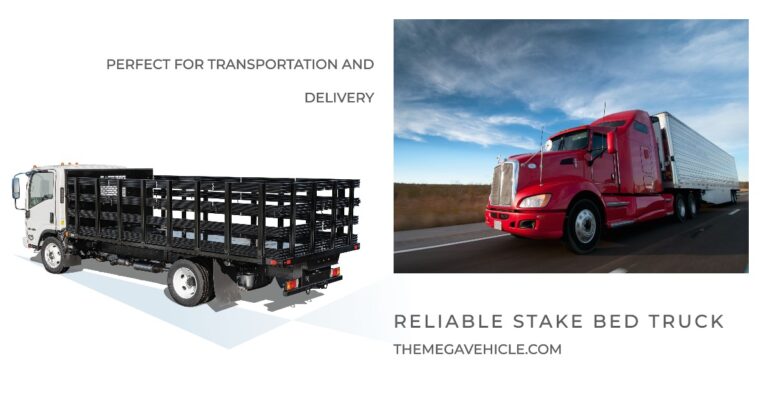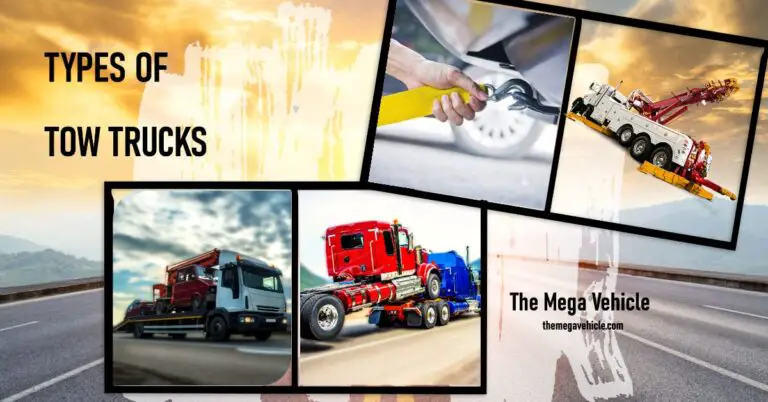Unlocking the Power and Versatility of Boom Trucks: A Comprehensive Guide

What is a boom truck?
A boom truck is a versatile vehicle that combines the functionality of a truck with a telescopic boom or hydraulic crane. The primary purpose of a boom truck is to provide access to elevated areas and lift heavy loads efficiently.
The telescopic boom on a boom truck allows for vertical and horizontal movement, making it suitable for various applications. Depending on the model, it can extend to multiple lengths, enabling operators to reach heights that may be otherwise inaccessible. This feature makes boom trucks particularly useful in construction, utility maintenance, telecommunications, and tree care industries.
The hydraulic crane attached to the boom enhances the truck’s lifting capacity. It enables safe and controlled lifting and lowering of heavy objects, making it ideal for moving equipment, materials, or workers to elevated locations.
Boom trucks are designed to provide stability and safety while working at heights. They are equipped with outriggers or stabilizers extending from the vehicle’s sides to provide additional support and prevent tipping during lifting operations. Additionally, many models have advanced safety features such as load monitoring systems, anti-collision technology, and ergonomic controls.
The Various Types and Configurations of Boom Trucks
Boom trucks, also known as crane trucks or knuckle boom trucks, are versatile vehicles used in various industries for lifting and moving heavy loads. They come in different types and configurations to suit specific job requirements. Let’s explore some of the common types and configurations of boom trucks:
1. Telescopic Boom Trucks
These trucks feature a telescoping boom that extends outwards to reach high elevations. They are commonly used in construction, maintenance, and utility industries for tasks like erecting structures, installing signage, or repairing electrical lines.
2. Articulating Boom Trucks
Also known as knuckle boom trucks, these vehicles have a folding arm for increased flexibility and maneuverability. Articulating boom trucks are ideal for accessing tight spaces or reaching around obstacles. They find applications in industries such as tree care, telecommunication, and material handling.
3. Cherry Picker Trucks
Cherry picker trucks, also called aerial lift trucks or bucket trucks, are equipped with a hydraulic lift platform attached to a boom. This configuration enables workers to safely access elevated areas like power lines or tree branches for maintenance or rescue operations.
4. Service Trucks
Boom trucks can also be customized with various service options to meet specific industry needs. Service truck configurations often include additional compartments for storing tools, equipment, and supplies necessary for onsite repairs or maintenance.
5. Flatbed Trucks with Crane
These boom truck configurations combine the functionality of a flatbed truck with a crane attachment. They are commonly used in the construction and transportation industries for loading and unloading heavy materials or equipment onto the flatbed.
6. Truck-mounted Cranes
These boom trucks are specifically designed to handle heavy-duty lifting tasks. Truck-mounted cranes feature a robust crane arm mounted on a truck chassis, allowing easy transportation between job sites.
Whether you require a telescopic boom truck for construction purposes or an articulating boom truck for tree maintenance, the various types and configurations available ensure you can find the perfect boom truck to suit your specific needs.
Table of Contents
straight boom vs. knuckle boom
When comparing the straight boom and knuckle boom, both have unique advantages depending on your specific needs.
The straight boom, also known as a stick boom or telescopic boom, offers excellent reach and lifting capacity. It is ideal for tasks that require long horizontal reach, such as loading and unloading heavy materials on construction sites or reaching high tree branches for trimming. The straight design provides stability and strength, allowing you to work efficiently in various conditions.
On the other hand, the knuckle boom, also referred to as an articulating boom or articulated crane, offers greater flexibility and maneuverability. Its articulated design allows for precise positioning in tight spaces or around obstacles. This makes it a preferred choice for tasks that require a combination of reach and agility, such as installing signage, working in congested urban areas, or performing maintenance on utility lines.
Both types of booms have their benefits, so choosing the right one depends on your specific requirements. Consider factors such as the nature of your project, the terrain you’ll be working on, and the type of materials you’ll be handling.
Ultimately, whether you opt for a straight boom or a knuckle boom, both are powerful tools that can significantly enhance productivity and efficiency in various industries.
mounted vs. stand-alone boom trucks
There are two main options when considering boom trucks: mounted boom trucks and stand-alone boom trucks. Let’s explore the differences between these two types:
Mounted Boom Trucks
Mounted boom trucks, known as truck-mounted cranes, are built directly onto a truck chassis. They offer the advantage of being highly mobile since they can be driven to different job sites. These trucks have a hydraulic-powered telescoping or articulating boom that allows for precise lifting and positioning of heavy loads.
One of the key benefits of mounted boom trucks is their versatility. They can be used for various applications, such as construction, utility work, tree maintenance, and more. They are also relatively easy to transport since they don’t require separate trailers or equipment.
Stand-alone Boom Trucks
On the other hand, stand-alone boom trucks are not built onto a truck chassis. Instead, they are designed as separate units that need to be transported to the job site using a trailer or other means. These trucks are typically larger and more powerful than mounted boom trucks, allowing them to handle heavier loads and reach greater heights.
The main advantage of stand-alone boom trucks lies in their lifting capacity. They are often preferred for lifting heavy loads or working at significant heights. These trucks are commonly used in heavy construction, oil and gas, and infrastructure projects.
Choosing between mounted boom trucks and stand-alone boom trucks depends on several factors, including the nature of the job, required lifting capacity, mobility needs, and budget constraints.
The Key Applications and Industries that Utilize Boom Trucks
Boom trucks, also known as crane or bucket trucks, are versatile vehicles used across various industries. Here are some key applications and industries that utilize boom trucks:
Construction Industry Applications
Boom trucks play a crucial role in the construction industry. They are used for lifting and moving heavy materials, such as steel beams, concrete blocks, and construction equipment. These trucks are equipped with hydraulic lifting arms, allowing them to reach great heights and handle heavy loads precisely. Construction companies rely on boom trucks to efficiently complete tasks like building structures, installing HVAC systems, and setting up signage.
Utility Industry Applications
The utility industry heavily relies on boom trucks for maintenance and repair work. These vehicles have an extendable boom arm and a bucket or platform at the end, providing workers with safe access to overhead power lines, transformers, and other utility infrastructure. Boom trucks enable technicians to perform power line inspection, pole installation, streetlight repair, and cable installation efficiently and safely.
Tree Care Industry Applications
In the tree care industry, boom trucks are essential tools for arborists and tree care professionals. With their elevated platforms or buckets, these vehicles provide a secure working environment for trimming, pruning, or removing trees at height. Boom trucks enable arborists to access difficult-to-reach areas without ladders or climbing gear. This improves safety, efficiency, and productivity in tree care operations.
Other Industries
Besides the construction, utility, and tree care industries, boom trucks are utilized in several other sectors. These include telecommunications, where they assist in installing communication equipment on cell towers; the film production industry for capturing aerial shots; municipalities for streetlight maintenance; and sign installation companies for mounting signage at elevated locations.
In short, boom trucks find applications in various industries due to their versatility and ability to handle heavy loads at height. Whether it’s construction projects, utility maintenance, tree care operations, or other specialized tasks, boom trucks are vital in enhancing efficiency and safety in various industries.
The Advantages of Using Boom Trucks in Different Scenarios
Boom trucks are invaluable in various scenarios, providing many benefits and advantages. Let’s explore some key reasons why boom trucks can significantly enhance efficiency, productivity, safety, and versatility.
- One of the most significant advantages of boom trucks is their ability to increase efficiency and productivity. These trucks have a hydraulic arm or boom that can extend and reach great heights, allowing easier access to elevated areas. This feature eliminates the need for traditional scaffolding or cranes, saving valuable time and resources. With boom trucks, tasks that usually take hours can be completed swiftly and efficiently.
- In addition to improved efficiency, boom trucks also offer enhanced safety features. The hydraulic system ensures stability and precise positioning, minimizing the risk of accidents or injuries. Operators can control the movement of the boom from a safe distance using remote controls, reducing the need for a workforce in hazardous or hard-to-reach areas. This increased safety protects workers and reduces potential damage to surrounding structures.
- Boom trucks are exceptionally versatile in reaching difficult areas. Whether repairing power lines, trimming trees, or installing signage, these trucks can access high or narrow spaces that would otherwise be challenging to reach. Their flexible booms can rotate 360 degrees, providing operators a wide range of motion and maneuverability. This versatility allows for greater adaptability in different scenarios, making boom trucks an ideal choice for various industries.
Overall, the benefits and advantages of using boom trucks are undeniable. They offer increased efficiency by eliminating the need for traditional methods and streamlining operations. Enhanced safety features ensure the well-being of workers and protect surrounding structures.
Essential Considerations In Choosing a Boom Truck for Your Business Needs
Several important factors should be considered when choosing a boom truck for your business or project needs. Here are some factors to keep in mind to ensure you make the right decision:
- Weight Capacity Requirements: One of the first things you need to determine is the weight capacity that your boom truck should have. Consider the heaviest loads you will need to lift and ensure the boom truck you choose can handle them safely and efficiently.
- Outreach Capabilities: The outreach capability of a boom truck refers to its ability to reach horizontally. Evaluate how far you need the boom to extend and choose a truck with an appropriate outreach capacity to meet your project requirements.
- Operator Training and Certification Needs: Operating a boom truck requires specialized skills and training. Ensure your operators are adequately trained and certified to operate your chosen model. Safety should always be a top priority, so make sure your operators are well-versed in the proper operation and safety protocols.
- Durability and Reliability: Consider the durability and reliability of the boom truck you are considering. Look for reputable brands that manufacture high-quality equipment that withstand heavy usage and challenging conditions. Investing in a reliable boom truck will save you from unnecessary downtime and maintenance costs in the long run.
- Maintenance and Service Support: It’s essential to consider maintenance and service support availability for your chosen boom truck. Look for manufacturers or dealerships offering comprehensive after-sales support, including availability of spare parts, technical assistance, and regular maintenance services. This will help keep your boom truck in optimal condition throughout its lifespan.
- Budget Considerations: Budget is always a significant factor when making any business investment. Determine your budget constraints and explore options that provide the best value for your money without compromising quality or safety.
By carefully considering these factors, you can select a boom truck that meets your specific weight capacity requirements, outreach capabilities, and operator training needs. Prioritizing durability, reliability, maintenance support, and budget considerations will ensure that you make a well-informed decision that aligns with the unique needs of your business or project.
Maintaining and Operating Boom Trucks
Maintaining and operating boom trucks safely and efficiently is crucial for ensuring workers’ well-being and the smooth functioning of your operations. Let’s discuss some essential maintenance tips and a pre-operation inspection checklist for safety compliance and emphasize the importance of operator training.
Boom Truck Maintenance Tips
- Regular Inspections: Conduct routine inspections of your boom truck to identify any signs of wear, damage, or malfunction. Pay special attention to crucial components such as hydraulic systems, outriggers, cables, and brakes.
- Fluid Levels: Check and maintain appropriate levels of fluids such as hydraulic oil, engine oil, coolant, and fuel. Neglecting fluid maintenance can lead to costly repairs or even accidents.
- Lubrication: Ensure all moving parts are appropriately lubricated according to the manufacturer’s recommendations. Lubrication helps prevent friction-related issues and extends the lifespan of components.
- Battery Care: Inspect the battery regularly for signs of corrosion or damage. Clean terminals and connections to prevent electrical failures.
- Tire Maintenance: Regularly check tire pressure and tread wear to avoid blowouts or accidents caused by insufficient traction.
Pre-Operation Inspections Checklist for Safety Compliance
- Structural Integrity: Inspect the boom truck’s structure for any signs of cracks, dents, or other damages that may compromise its stability.
- Hydraulic Systems: Check hydraulic hoses, fittings, cylinders, and valves for leaks, wear, or damage. Ensure that all connections are secure before operation.
- Controls and Safety Devices: Verify that all operational controls function correctly and that safety devices, such as emergency stop buttons and load limiters, are in proper working order.
- Outriggers/Stabilizers: Examine outriggers or stabilizers for stability and ensure they are fully extended and positioned adequately before lifting operations.
- Load Capacity: Confirm that the boom truck’s load capacity is within the manufacturer’s specified limits. Overloading can lead to structural failures and accidents.
Frequently Asked Questions
Q1. What is the difference between a boom truck and a crane?
A. Boom trucks are more versatile due to their crane and truck combination. They excel in tasks that require flexibility and mobility. Conversely, Cranes are specialized machines solely focused on lifting heavy loads with precision and power.
Q2. Is special training required to operate a boom truck?
A. Operating a boom truck involves handling heavy loads and maneuvering the truck’s extendable arm or boom. To ensure safety and competence, operators must undergo specific training programs covering equipment operation, load handling, safety procedures, and proper maintenance. This training helps operators understand the unique challenges and risks of operating a boom truck, enabling them to perform their duties effectively and safely.
Final Thoughts
A boom truck is an incredible machine that combines strength, adaptability, and accuracy to perform a wide variety of tasks across many different industries. Its versatility and lifting capacity make it an invaluable tool for improving workflow, worker safety, and productivity.






